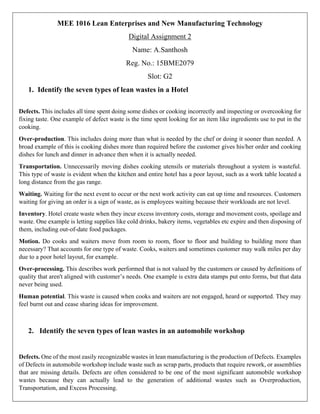The document describes the seven types of lean wastes in a hotel and automobile workshop. It then provides a case study on how the PDCA cycle was implemented in a manufacturing organization to improve the production process of picture frames. The company identified defects and scorches as problems. Potential causes were analyzed and solutions planned and implemented, such as adjusting pigment amounts. Checking showed a 60% reduction in defects, meeting the goal. The solutions were then standardized to continuously improve the process using PDCA's repetitive cycle of plan, do, check, act.




